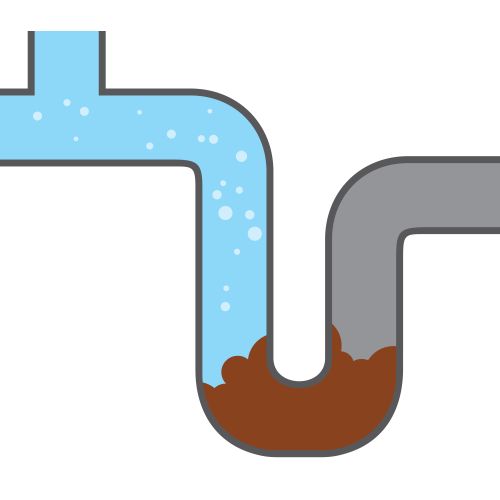How to unblock a soil pipe
Got a blocked soil pipe on your hands? Here’s how you can unblock it.
Your soil pipes are one of the most important aspects of your home’s plumbing system.
However, as they’re hidden in the walls or under your floors, they’re likely out of sight and out of mind. Considering the dirty work they do, ignorance really is bliss.
Without them, you wouldn’t be able to run your nightly bath to unwind after a long day or flush your toilets – which, as you can imagine, isn’t very pleasant. It’s only when they become blocked that we realise just how vital they are.
If you’ve been having difficulties with your soil pipes, and you suspect they may be blocked, there are luckily some things you can do to get things moving before you call a plumber.
How do waste pipes get blocked?
The most common cause of soil pipe blockages is non-flushable items – like wet wipes, fats, oils, and grease – being flushed down the toilet or poured down the sink.
If your toilet is no longer flowing when flushed, your sinks, baths, or showers aren’t draining efficiently, or bad smells are coming from your drains, your soil pipes may well be blocked.
So, how do I unblock it?
Admittedly, unclogging a soil pipe by yourself takes some bravery.
Blockages can be quite unpleasant, and it isn’t a job for the faint of heart. Even if you’re only slightly squeamish, it might be best to call a plumber to do the job for you.
However, if you wish to proceed by yourself, follow these steps:
- Make sure you wear protective clothing and dig out a face mask. Appropriate attire is a must.
- Locate your soil pipe. More modern, plastic soil pipes are typically found on the side of houses, whereas cast-iron ones are found up on the roof. If you have the latter, you’ll need to determine whether or not you have safe access to it. If not, you’ll need a professional engineer to assist you.
- For plastic soil pipes, the next step is to locate the ‘cleaning eye’. This is a large hole that can be found where the branch pipes join the main stack.
- Once you’ve found it, insert a drain auger, also known as a ‘snake tool’ or ‘toilet jack’, passing it through the pipe until you reach the blockage.
- Once you’ve reached the blockage, crank the handle to release the coiled wire, and push/pull to (hopefully) release the blockage and allow water to start flowing freely again.
- Once you’re sure everything is back in full working order, disinfect the stack thoroughly before putting it back together.
When should I call a plumber?
If you don’t have access to your soil pipe, or you’ve followed the above steps and you’re still experiencing blockage symptoms, you should think about calling a plumber.
9 times out of 10, following these steps should do the trick and get everything moving again, but if problems persist, it’s vital to seek professional assistance to avoid bigger and costlier issues.
Need further advice?
Whether you need further information on how to care for or unblock your soil pipes, or you need a replacement PVC pipe – we’re here for you.
To find out more about our soil pipe fittings, or to ask us a question, don’t hesitate to get in touch.
You can reach us by calling 01254 382 000 or emailing sales@totalpipes.co.uk and we’ll be in touch with you shortly.
We look forward to hearing from you and finding out more about how we can help!

